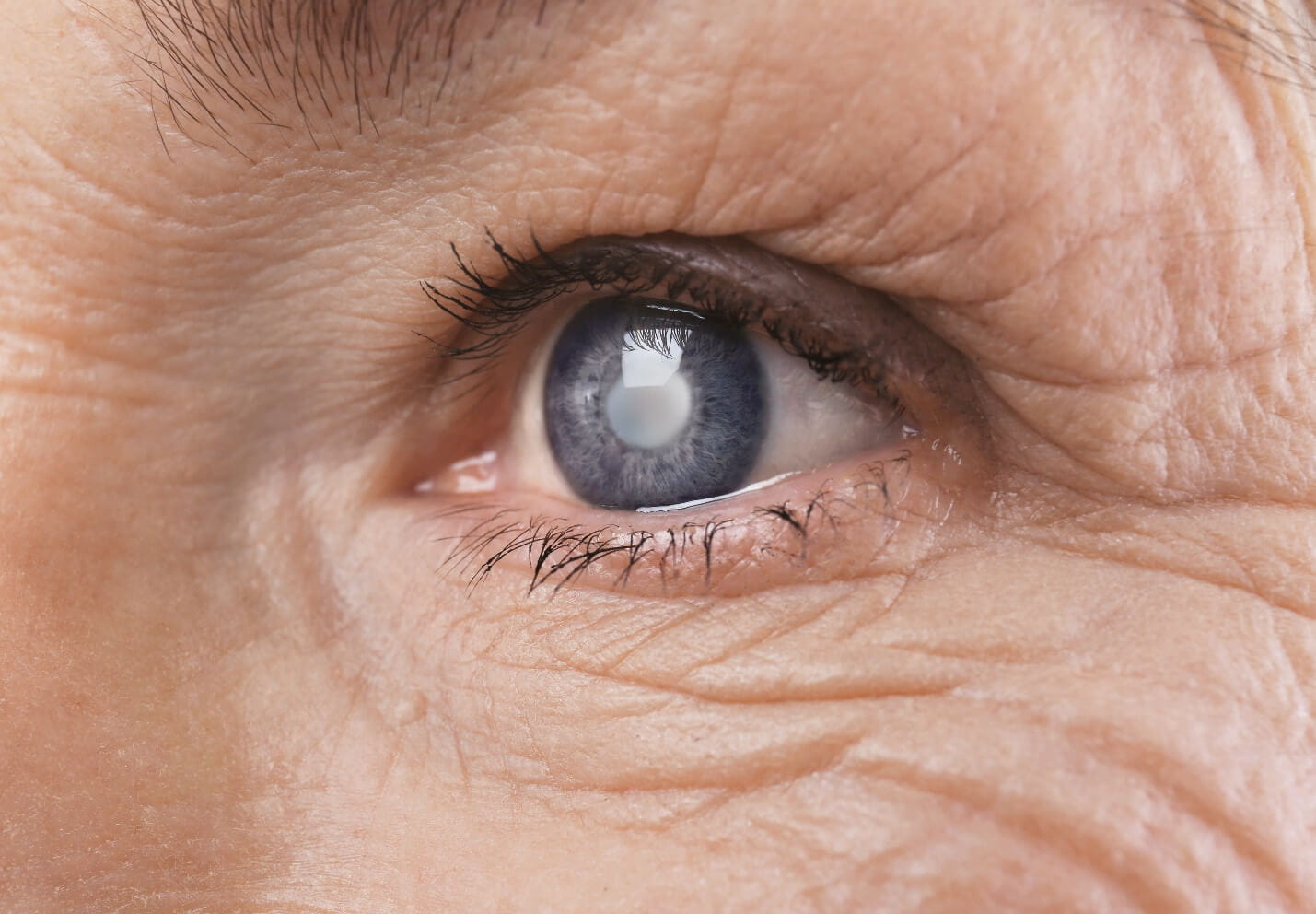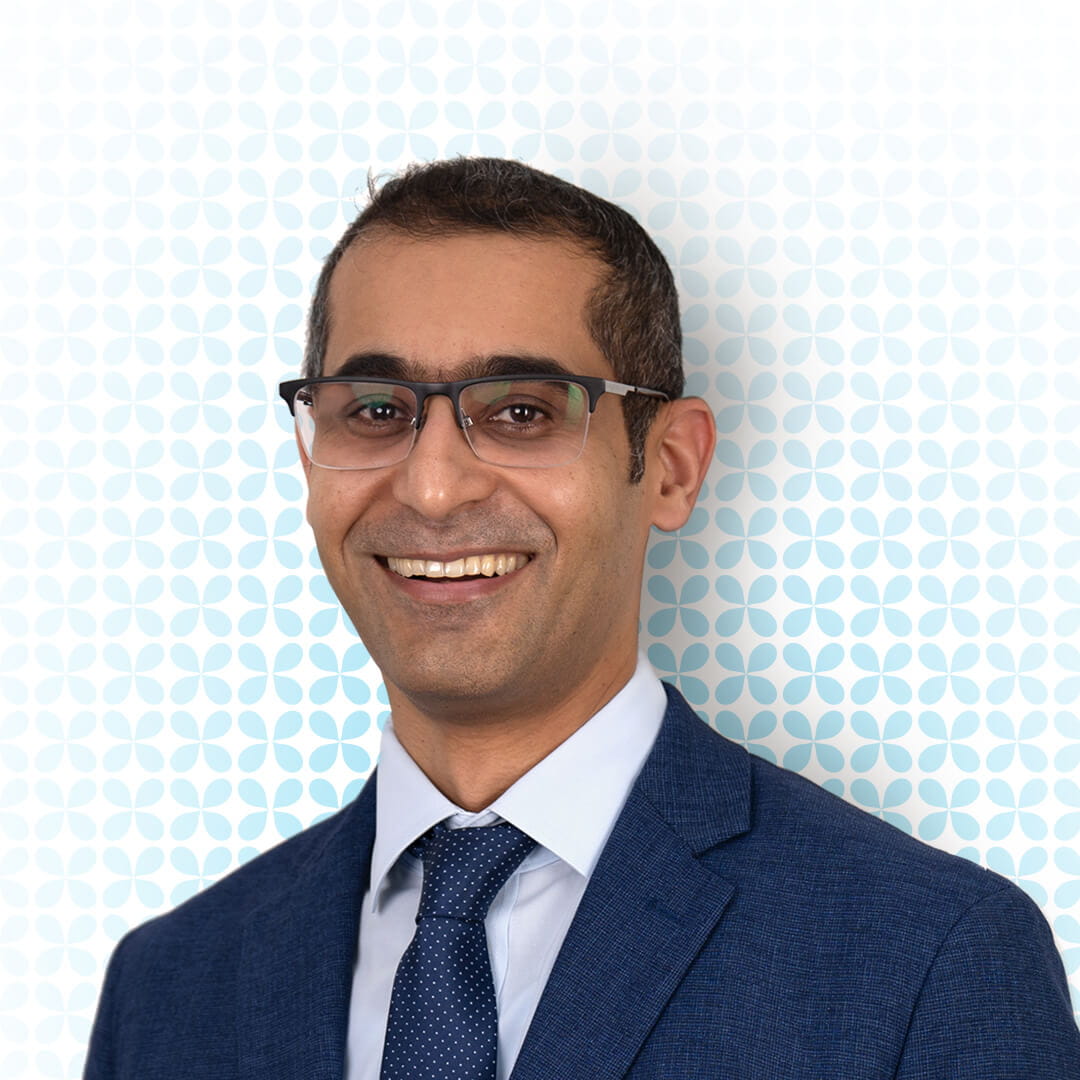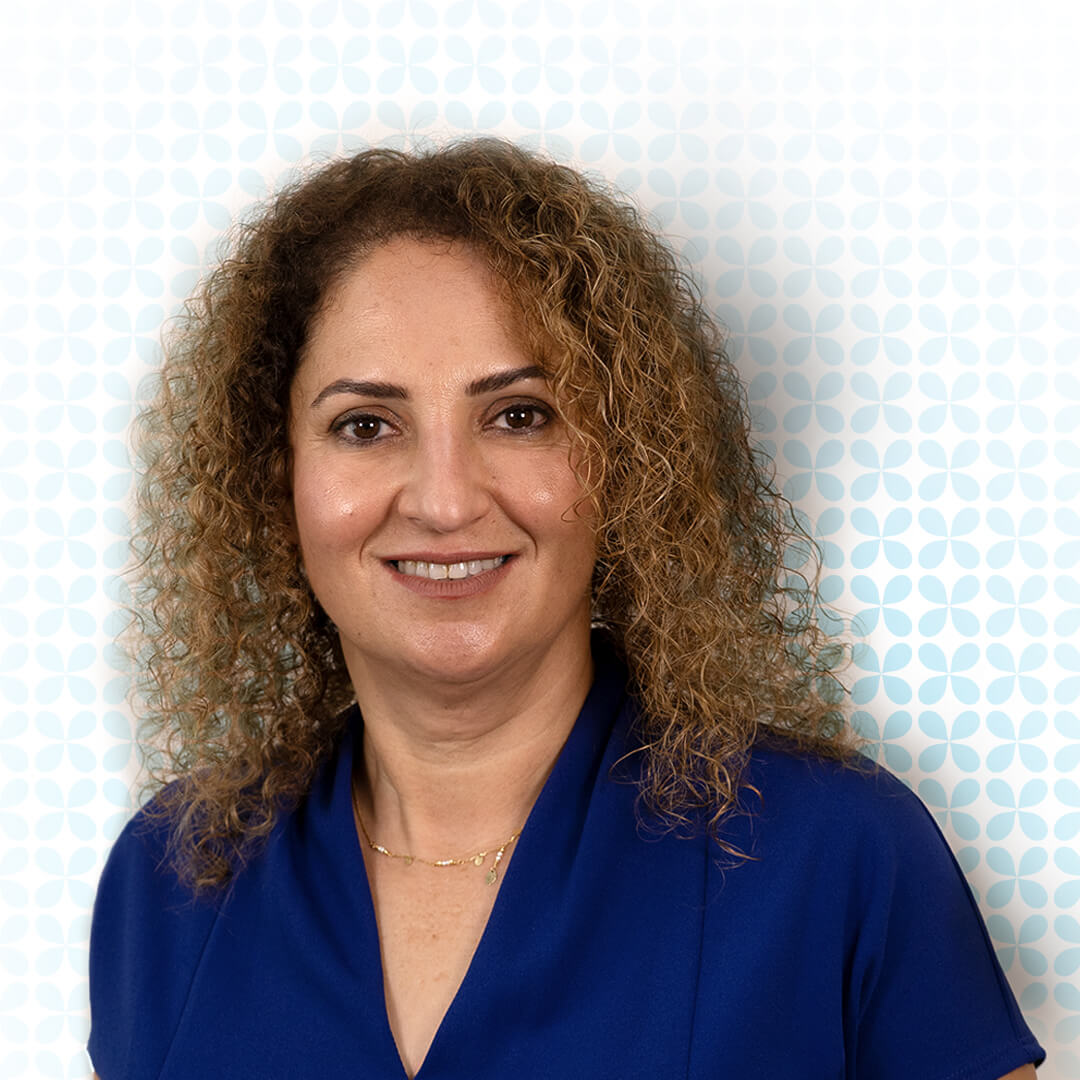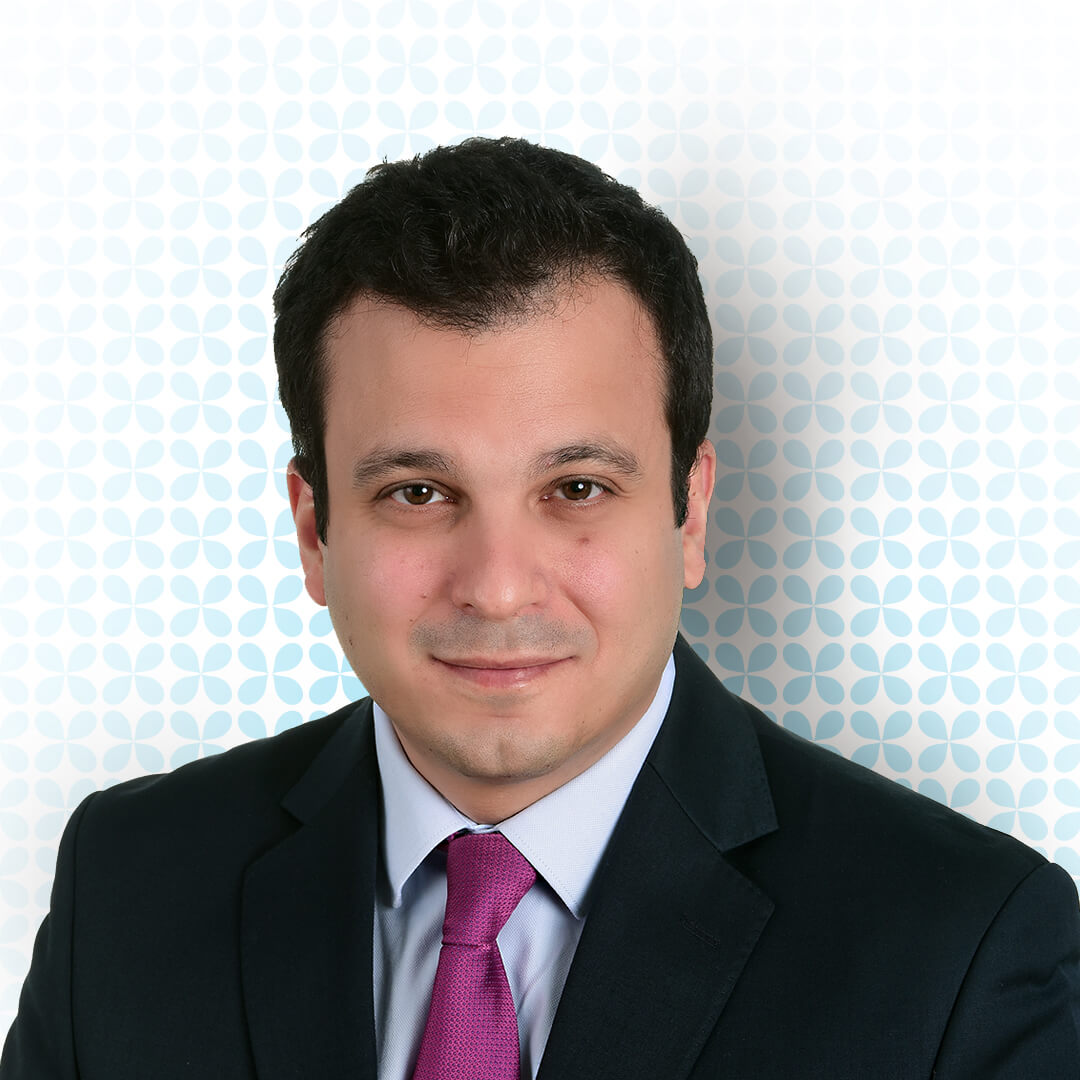About Adult cataract
A cataract is a condition where the eye’s natural lens becomes cloudy, reducing the amount of light that reaches the retina. This clouding can result in blurred or hazy vision and, in more severe cases, lead to vision impairment or loss of sight. People with cataracts often find that colours appear less vibrant, and everyday activities like reading, driving, or recognising faces become more difficult. Cataracts typically develop slowly over time, and the early stages might not be noticeable until vision problems begin to interfere with daily life.

Causes of Cataracts
The primary cause of cataracts is age-related changes to the eye’s lens. As we age, proteins in the lens begin to break down, causing the lens to become cloudy. However, there are other factors that may contribute to the development of cataracts at an earlier age:
- Diabetes: People with diabetes have an increased risk of developing cataracts.
- Certain Medications: Long-term use of medications like corticosteroids can accelerate cataract formation.
- Eye Trauma or Surgery: Previous eye injuries or surgeries may increase the likelihood of cataracts.
- High Myopia: People with higher levels of myopia are more prone to developing cataracts.
- Family History: A genetic predisposition can also contribute to the development of cataracts.
Conditions associated with Cataracts
- Chronic diseases like diabetes
- Smoking and excessive alcohol consumption.
- Prolonged exposure to UV light without proper eye protection.
- Several risk factors may increase the likelihood of developing cataracts, including
- Obesity and high blood pressure.
Symptoms and early signs of Cataracts
Cataracts often develop slowly, and many people are unaware of the problem until it affects their daily lives.
Common symptoms include:
- Blurred or cloudy vision: As the lens becomes clouded, objects may lose sharpness, making it harder to see details.
- Difficulty with contrast and colour perception: Colours can appear faded or yellowed, making it challenging to distinguish between shades, especially in low light.
- Glare and light sensitivity: Bright lights, such as headlights, may cause discomfort, and you may see halos or rings around lights, especially at night.
- Frequent changes in glasses prescription: Cataracts can cause vision changes, requiring more frequent updates to your glasses prescription.
- Double vision in one eye (diplopia): The cataract can distort vision, causing overlapping/double images in one eye.
Examination/Diagnosis
Cataracts are diagnosed through a comprehensive eye examination conducted by an ophthalmologist. During the exam, a slit-lamp is used to thoroughly examine the eye, including the lens and other structures. Eye drops may dilate the pupil, allowing the specialist to discuss the lens and retina in more detail.
Investigation
In addition to a standard eye examination, further tests may be recommended to determine the severity of the cataract and to check for any associated conditions:
- Corneal imaging (Pentacam) to assess the health of the cornea.
- Biometry to measure the eye’s shape and size, which helps determine the strength of the replacement intraocular lens (IOL).
- Optical Coherence Tomography (OCT) to scan the retina and detect any underlying retinal conditions.
Currently, no medical treatment, such as eye drops or medication, can reverse or prevent cataracts. The most effective treatment is surgery, which involves removing the cloudy natural lens and replacing it with an artificial lens.
Cataract surgery is a routine and highly successful procedure typically lasting no more than 20 to 30 minutes. It is usually performed under local anaesthesia, though sedation or general anaesthesia may be used in certain cases.
Types of Intraocular Lenses (IOLs) for Cataract Surgery
During cataract surgery, the clouded natural lens is replaced with an artificial lens called an intraocular lens (IOL). Several types of IOLs are available to suit different needs:
- Monofocal Lenses: Provide clear vision at a single set distance (usually for distance vision), though glasses may still be needed for reading or intermediate tasks.
- Multifocal Lenses: These lenses offer clear vision at multiple distances (near, intermediate, and far), reducing the need for glasses after surgery.
- Extended Depth-of-Focus (EDOF) Lenses: EDOF lenses provide a wider range of high-quality vision for intermediate and distance tasks, with reduced reliance on glasses.
- Accommodative Lenses: These lenses mimic the eye’s natural ability to change focus, moving or adjusting shape inside the eye to provide a broader range of vision.
- Toric Lenses: Designed specifically for patients with astigmatism, toric lenses correct the shape of the eye and provide clear vision. They are available as monofocal, multifocal, and EDOF options.
What to Expect After Cataract Surgery?
After cataract surgery, most patients notice an improvement in vision within a few days, though full recovery may take up to 6 weeks. It is normal to experience some mild discomfort, such as itching, sensitivity to light, or slight swelling, which typically subsides within a few days.
Your eye doctor will provide clear post-operative care instructions, including the use of prescribed eye drops to prevent infection and reduce inflammation. During recovery, it’s important to avoid rubbing your eye and strenuous activities, allowing the eye to heal properly. Follow-up appointments will be scheduled to monitor your progress and ensure successful recovery.
Conditions & Treatment
Conjunctivitis
About
Pink eye or Conjunctivitis is a common condition which causes the surface of your eye to go red and, often, sticky or watery and your eye becomes sore. There are two types of conjunctivitis:- Viral conjunctivitistends to cause a watery red eye and can last for two to three weeks even with the correct treatment. Generally, viral conjunctivitis does not affect vision but in some cases vision may become blurry or see glare when looking at lights. This is due to an inflammatory reaction causing small white dots on the cornea, the transparent window at the front of the eye. These usually fade with time, but it can take a few weeks or even months.
- Bacterial conjunctivitisis more likely to cause a red eye with a sticky yellow discharge.
Conjunctivitis
About
Pink eye or Conjunctivitis is a common condition which causes the surface of your eye to go red and, often, sticky or watery and your eye becomes sore. There are two types of conjunctivitis:- Viral conjunctivitistends to cause a watery red eye and can last for two to three weeks even with the correct treatment. Generally, viral conjunctivitis does not affect vision but in some cases vision may become blurry or see glare when looking at lights. This is due to an inflammatory reaction causing small white dots on the cornea, the transparent window at the front of the eye. These usually fade with time, but it can take a few weeks or even months.
- Bacterial conjunctivitisis more likely to cause a red eye with a sticky yellow discharge.
Request an Appointment













